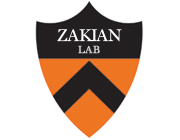Elaboration of telomeres in yeast: recognition and modification of termini from Oxytricha macronuclear DNA.
Publication Year
1984
Type
Journal Article
Abstract
The termini of macronuclear DNA molecules from the protozoan Oxytricha fallax share a common sequence and structure, both of which differ markedly from those deduced for yeast telomeres. Despite these differences, terminal restriction fragments from O. fallax macronuclear DNA can support telomere formation in yeasts. Two linear plasmids (LYX-1 and LYX-2) constructed by ligating BamHI-digested total Oxytricha macronuclear DNA to a yeast vector were analyzed. One end of LYX-1 and both ends of LYX-2 are derived from the Oxytricha DNA that encodes rRNA (rDNA) whereas the other end of LYX-1 is from an Oxytricha fragment other than rDNA. After propagation in yeast, both ends of LYX-1 and LYX-2 retain the C4A4 repeat characteristic of the O. fallax terminal sequence. In addition, both ends of both plasmids acquire 300-1000 base pairs of DNA containing the sequence (C-A)n, a sequence found near the termini of yeast chromosomes. Thus, at least two different Oxytricha termini display distinctive properties in yeast cells in that linear plasmids containing them are not degraded nor are they integrated into chromosomal DNA. These Oxytricha termini may act directly as telomeres in yeast; alternatively, the Oxytricha DNA may serve as a signal that results in the elaboration of a yeast telomere on the ciliate DNA.
Keywords
Journal
Proc Natl Acad Sci U S A
Volume
81
Issue
5
Pages
1475-9
Date Published
03/1984
ISSN Number
0027-8424
Alternate Journal
Proc. Natl. Acad. Sci. U.S.A.
PMID
6324194

